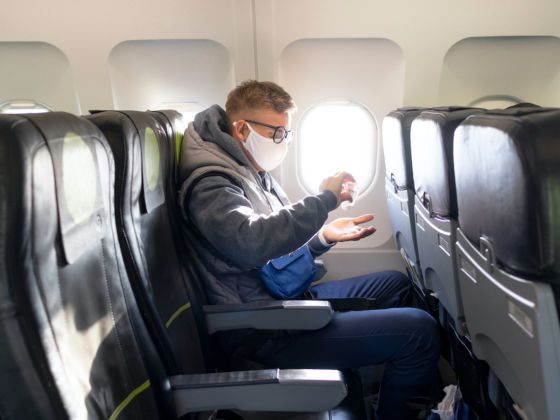Given the tight quarters, it might seem like airplanes would be prime locations for COVID-19 to rapidly spread. But when you look into the factors involved, and the probability of actually coming into contact with the virus given airlines’ safety measures, the odds of becoming infected are much lower than you may have thought. Arnold Barnett, a professor of management science at MIT, set out to determine the actual odds of contracting COVID-19 while flying. While his findings don’t account for airports or other aspects of travel, they should give you some peace of mind the next time you board a plane.


Barnett considered a range of variables, including sitting near a contagious person, the odds that masks (required on the vast majority or airlines) fail to provide protection, advanced air filtration systems, and empty middle seats. Barnett figured out that we have approximately a one in 4,300 chance of catching COVID-19 while flying on a full two-hour flight and a one in 7,700 chance if the airline leaves the middle seat open.
Going even further, he determined that the odds of dying from a case contracted inflight were about one in 400,000 or one in 600,000, depending on your age group, risk level, and other health factors. Barnett himself has said that despite the low-sounding odds, he wouldn’t feel comfortable flying right now given his age, 72 years old.
His findings are supported by University of Massachusetts biology professor Erin Bromage, who confirmed that air exchange systems in planes are even better than in hospitals, completely replacing the cabin air 30 times per hour. To keep your risk as low as possible, however, both Barnett and Bromage suggest choosing airlines that always keep the middle seat open.
Data from Australia further validates these findings. According to the country’s contact tracing system, while several infected people have boarded planes in recent months, no one has become infected on the plane itself.
The results of Barnett’s research haven’t been peer reviewed, but they were published in preprint form online.